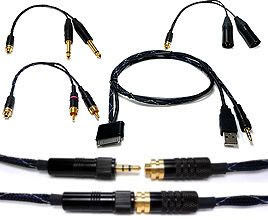Wall mounts for Flat Screen Displays
Everywhere you turn there are examples of flat screen displays mounted on a wall, airports, sports bars, restaurants, your buddy's house. They range in size from a small 12 inch LCD to 55 inches Plasma or a newer LED displays, with some weighing over 100 pounds. Plus to complicate the situation, there are just as many variations of mounts available, slim, low-profile, swivel, tilt and adjustable tilt. How do you choose and how much is it going to cost are the two questions asked all the time.
First, let us tackle the question on styles. Choosing the type of mount requires you to take a few factors into consideration. Displays should be viewed at eye level to avoid neck fatigue. When mounting the display above eye level a tilt mount or mounting the display as far from the viewing area as possible is recommended. Distance reduces looking up at a sharp angle. However, for standard tilt mounts as much as 4 inch spacing may be necessary. A corner mount location will require some swiveling and tilting to get the optimal view. Mounting on a wall that can be viewed from the sides require a low-profile mount. This provides a neat side profile view and hides the connections. The newer low-profile mounts only require a 0.31 spacing between the wall and the display. If you are tilting the low profile mount a minimum spacing of 0.75 inches is required between the wall and the display. In addition, some ultra slim low profile mounts have less weight capacities. You want to stay with a high weight capacity fixed or tilt mount for the bigger displays, especially if ultra slim low profile is not a concern.
VESA is a Video Electronics Standards Association, which helps display manufacturers standardize the four holes mounting pattern on the back of the display. Nowadays most manufacturers comply with the standards, but the standard still varies depending on the display size and the manufacturer. Most new displays will comply with VESA whole patterns. The display’s VESA actual requirement is located in the manual.
Wall mounts are constructed from steel. Displays are made from a combination of plastic, metal and electronics. Important because you want the display to stay on the wall, where ever you decide to hang it. Falling of the the wall is not an option. This is not a problem if you attach the mount to the wall properly and the display to the mount properly.

Now that VESA makes it simple to match the display pattern with the proper mount designed, one more critical factor is the display's weight. A steel mount will specify the maximum load weight. As we stated, an average 50-inch displays will weigh 70 to 80 pounds and some older plasmas as much as 100 pounds. Remember the mounts are steel and most will support the weight they are designed to carry. The critical component is the wall and the structure of the wall to support the weight. If you are mounting a heavy display unit on a wall, make sure the wall is structurally sound, follow the mounting directions and you will not have any problems.
Finally, how much should you pay for a wall mount? This will depend on the profile, swivel, and tilt requirements. You do not need a name brand mount, unless you have a specific design problem. These are steel mounts and as long as you matched them to the display’s mounting specifications, adhere to weight limits and install them properly, they will perform as design. So save your money and put the savings into upgrading the display, adding a Blu Ray or surround sound system, which are more important for a full high def experience.
















